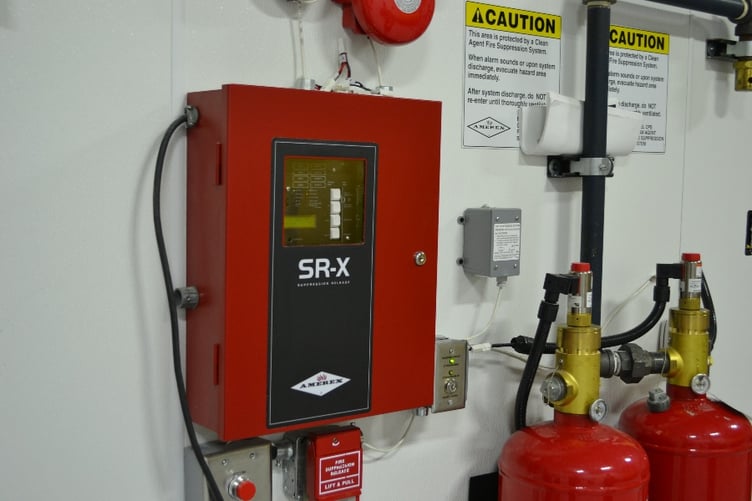
NFPA 2001 has defined the term “clean agent” as an electrically non conductive, volatile, or gaseous fire extinguishing agent that does not leave a residue upon evaporation. A clean agent fire suppression system will take either an inert gas or a chemical that is stored in a container and discharge it, when necessary, to extinguish a fire in its incipient stage.
There are many benefits to using a clean agent fire suppression system. These systems are fast, effective, safe, clean, and eco-friendly. The clean agent systems are three dimensional as well. Most systems can reach extinguishing concentration levels in just 10 seconds or less. Clean agents are designed to suppress the fire while it’s still in its incipient stage, meaning it will suppress the fire before it grows and enters into the heat/flame stage. The clean agents that are dispersed in a fire suppression system are safe to use in areas populated by humans, and are non-ozone reducing with a short or no atmospheric lifetime. There is no costly clean-up once the clean agents have been discharged, because they are fast vaporizing gases that do not leave a residue after they dissipate.
The three most common clean agents used in fire suppression systems are inert gases, 3M™ Novec™ 1230 Fire Protection Fluid, and FM-200. Inert gases used in fire suppression systems are stored as a gas and consist of a mixture of nitrogen, argon and carbon dioxide gases. Novec 1230 fluid is stored as a liquid and is a fluorinated ketone that contains carbon, fluorine, and oxygen. FM-200 is stored as a liquefied compressed gas and is a hydrofluorocarbon compound. These common clean agents are typically used to protect valuable assets, such as:
- Computer systems, including server rooms, and other electrical components
- Telecommunications systems
- Record/file repositories and libraries — anything with paper that must be protected
- Digital data repositories
- Cultural assets such as historical buildings, museums, and artwork
- Flammable liquid storage for which sprinkler systems may not provide proper protection
- Subfloors with critical building infrastructure that can be damaged with exposure to water
- Laboratory and medical equipment
Clean agent systems are not typically required by building or fire codes. However, more businesses and organizations are turning to these systems to protect their properties.
Are you ready for a Clean Agent Fire Suppression System?
If you have questions or are thinking about upgrading your current fire protection system, contact Koorsen Fire & Security today. One of our fire suppression experts would be happy to answer all of your questions about clean agents. If you have a fire suppression system already installed, Koorsen can take care of the routine inspections and testing. Our experts can design, install, and maintain your clean agent fire suppression system, so contact us today.


